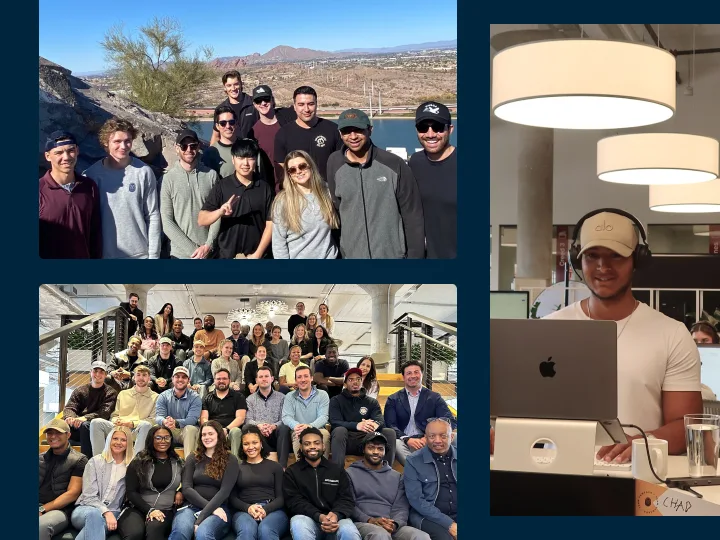Life at Samsara
Behind the build: Smart Trailers and Connected Equipment at Samsara
November 17, 2025
Vice President of Product & Engineering, Connected Equipment

Get the latest from Samsara
Subscribe nowMy team and I are obsessed with the challenges Samsara customers face and how we can solve them. We think about the vast world of tools and equipment—trailers, generators, forklifts, heavy machinery, powered assets, and more—spread across countless job sites, yards, and depots. These are the physical objects that build our world, deliver our goods, and keep our utilities running. For a long time, managing these assets was a guessing game for our customers. Is the $20,000 piece of surveying equipment out in the field on a job site? Is it lost or stolen? Is the excavator due for maintenance? Should customers purchase more vibe plates or load balance them across jobsites? Is the skid steer sitting idle when it could be driving revenue? Who last used the concrete saw?
Solving visibility in the physical world
These are the kinds of challenges we dig into every day. On the Smart Trailers & Connected Equipment (STCE) team at Samsara, we bring visibility and predictability to the physical world. Our products help customers recover stolen assets, right-size fleets of equipment, increase uptime, prevent costly breakdowns, keep crews productive, and drive more revenue from their investments.

Full stack ownership, real-world impact
We build full-stack solutions for the real-world. We have a strong ownership and bias for action across every aspect of product development from the customer problem we’re solving to the mounting screw on our IoT devices to the LLM that makes it easy for customers to answer real questions and drive value at scale. The real magic happens when you can make trade-offs across every layer of the stack—product, hardware, firmware, software—from the mechanical enclosure and battery chemistry to low-power firmware architecture to the cloud infrastructure that ingests data to the AI that helps our customers make purchasing decisions.
Take theft recovery: we need to help customers recover stolen assets like concrete saws. How do you design a device that is discrete enough to be mounted on thousands of types of assets? Rugged enough for the world of physical operations? How do you trade off size, real time visibility (energy consumption), and ruggedization? How do you future proof to add value down the road? How do you optimize communication protocols to ensure enterprise-grade security and anonymity while staying energy efficient? How do you build a reliable geofencing algorithm? How do you then let a customer know that an asset is likely stolen? How do you make sure that unit economics and customer value lead to a real business?
These are product, hardware, firmware, and software problems, and if we get them right, the opportunity is huge. Owning every part of the problem means shipping value faster, prototyping in bolder ways, and redefining industrial IoT for the sectors that make up 40% of global GDP. Everyone on the STCE team helps solve these questions.
Defining a new product category the Samsara way
If you want to know more about how we build, take a look at the Asset Tag. The idea for the Asset Tag was born from curiosity and entrepreneurial spirit—hallmarks of how we operate. A few of us were debugging a prototype gateway and got curious. We pulled up a map of all of our gateways in the field and realized that it wasn't just a map—our current customers formed a network that could change the game in physical operations.
Customer Pull: We heard from several customers that theft and loss of smaller mission critical assets were real pain points for their operations. Think about the field technician that shows up to install your internet connection, but forgets a fiber splicer or a construction crew that has their concrete saw stolen. The challenge is that these kinds of assets are too small physically for traditional cellular-based asset trackers.
Hardware and Connectivity. At the same time, we experimented with long-range Bluetooth for temperature sensors, making them powerful enough to transmit through a 53-foot trailer full of ice cream. We knew we could use low cost and energy efficient silicon to transmit thousands of feet. What if we turned our customer base into a network that listened for a tiny Bluetooth tag? The bucket truck the internet technician drives could now listen for and monitor that mission critical fiber splicer. If the splicer goes missing, the other millions of gateways across our customer base will be on the lookout for it.
Firmware and Rapid Prototyping. That was a pretty crazy idea. Understandably, people had doubts that a truck going 70 mph would be able to pick up a Bluetooth device on the side of a road. Does Bluetooth work? Will the network be dense enough to be useful? That doubt motivated us. We used custom firmware in our personal vehicle gateways and hid prototype Asset Tags on roads and highways. We designed a series of iterative experiments, gaining the conviction to move forward on bold bets.
Software. We needed to translate Bluetooth observations into geolocations on a map and ultimately drive value with workflows to help customers recover missing assets. The algorithms that do this are non-trivial. Bluetooth observations can range from super dense to sparse. Reliably turning signal strength into a distance estimate is tricky. Making all of this work at scale while balancing performance, latency, accuracy, and cost is even harder.
Feedback Loop. At every step, we partnered with customers who told us about their missing concrete saws and fiber splicers. We showed them results, got feedback, and iterated and iterated and iterated. The most gratifying moment was when our design partner held the final product in his hand and saw it in his dashboard: “Yeah, this is exactly what we talked about and brainstormed a year ago. Wow.”
The full-stack approach fueled our innovation, and the results are clear. Today, more than 100,000 Asset Tags help customers protect high-value assets from theft and loss. The Asset Tag is just one example of the many products we ship. At any moment, we’re working on new concepts, scaling 0 to one products, and adding AI capabilities to at-scale products.
Talk to customers, ask questions, tinker, iterate, learn in the field—that mindset defines our team. It’s how we tackle new challenges, whether that’s tank level monitoring, building new workflows, helping customers with bill detention, or bringing advanced connectivity to the world of physical operations.
Where entrepreneurial builders define the future of industrial IoT
What truly sets people apart on the STCE team? Grit and curiosity. We need builders—folks who tackle tough problems with independence and conviction. People who want to get their hands dirty, figure out what to build, build it, and help sell it. Our engineers and product managers spend time in the field, understanding firsthand how customers use our products. That perspective fuels ideas, grounds solutions, and ensures every feature we ship has real-world impact.
Join us and unlock the potential of massive real-world data
Samsara processes over 20 trillion data points every year from trailers, equipment, sensors, and more. That’s data at unmatched scale and it unlocks possibilities that were unimaginable just a few years ago. With AI, we’re able to surface insights and actions—predicting maintenance before it’s needed, optimizing fleet operations in real time, and revealing patterns that can save customers millions in operating costs.
We’re still in the early innings of IoT. Emerging chipsets, wireless protocols, and evolving AI keep us asking: What will this enable our customers to do in 3, 5, or 10 years? The best product managers, engineers, and technologists have relentless curiosity that pushes across technical boundaries, because they’re obsessed with solving the whole problem.
If you're an entrepreneurial builder ready to solve real-world challenges and own outcomes, then this is the place for you. Join us.
Get the latest from Samsara
Subscribe now
















